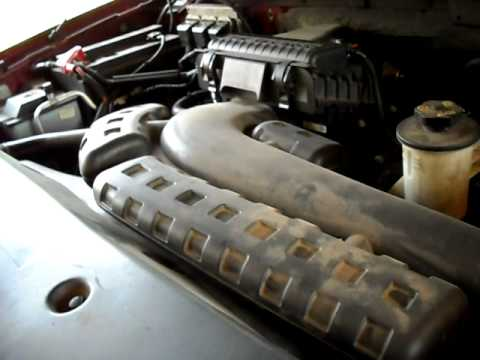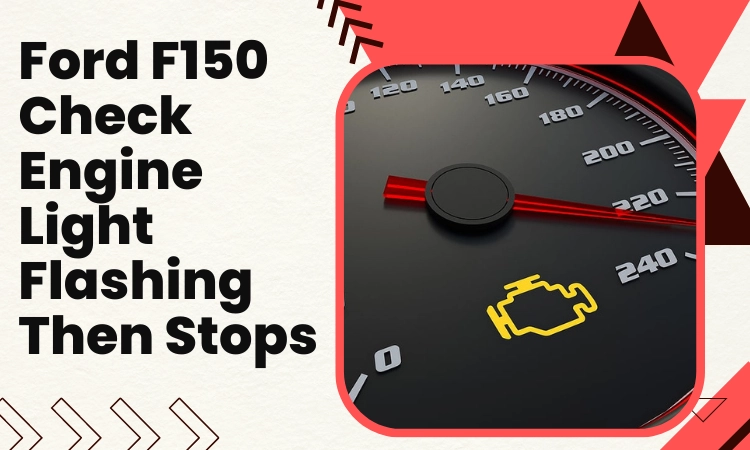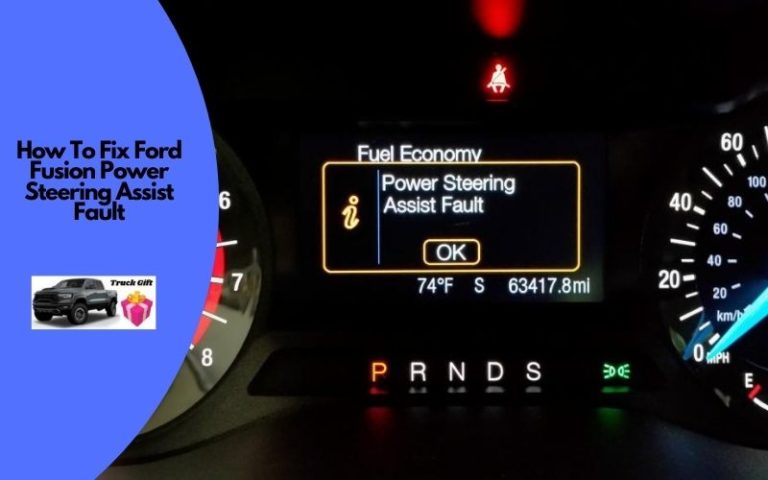F150 Ticking Noise When Cold [Explained & Fixed!]
The Ford F-150 is the most recognizable and popular pickup truck out there for tough jobs and weekend adventures. However, many have reported hearing a ticking noise coming from their F150s in cold conditions.
So, what causes F150 ticking noise when cold?
There are 6 potential culprits behind this ticking noise- low engine oil levels or dirty engine oil, a faulty lifter or valve, a worn camshaft, damaged engine bearings, and a malfunctioning fuel injector. Cleaning and replacing faulty components can solve the noise problem.
Wanna learn more about this? Stick with us because this article explains each cause thoroughly and has the solution to each of them.
Keep reading!
7 Reasons of F150 Ticking Noise When Cold: A Quick Summary

There are several potential causes of F150 ticking noise when cold, and the cold condition can contribute to each of them in different ways, as follows:
| Reasons | Other Symptoms | Solutions |
| Low Oil Level for F150 Ticking Noise When COld | Engine overheating Smell of burning Oil Pressure warning light | Check oil level and add oil if needed |
| Dirty Engine Oil | Smell of oil burning Increased ticking noise when driving | Replace with new oil |
| Weak Battery | Engine slow cranking or won’t start Battery corrosion Dimmed or flickering lights | Replace the Battery |
| Faulty Lifters or Valves | Engine misfire Check engine light on Sticky Lifter Dead cylinder | Replace lifters or valves |
| Worn Camshaft | Check engine light on Metal in engine oil Exhaust backfire or cylinder misfire Power loss and visible damage | Replace the camshaft |
| Damaged Engine Bearings | Low oil pressure | Replace the damaged engine bearings |
| Fuel Injector Issue | Low RPM and performance Engine won’t start or rough engine performance | Inspect fuel injector for clogs or damage and clean or replace fuel injector to solve F150 Ticking Noise When Cold |
Cause 1: Low Oil Level
In cold temperatures, the engine oil can become thicker and less fluid, which can cause it to circulate more slowly through the engine. This, in turn, can cause more wear and tear on the engine’s moving parts, leading to a ticking noise.
When the oil level is low, there’s even less oil available to lubricate the engine’s parts, exacerbating the issue.
Solution: Add Appropriate Level of Oil
- The first step is to check the oil level in your F150. Park your truck on a level surface and wait for the engine to cool down.
- Open the hood, locate the dipstick, and remove it.
- Wipe it clean, reinsert it, and pull it out again to check the oil level.
- If the level is below the recommended range, you need to add more oil. For Ford F150 vehicles, it is recommended to use the 5W-20 or 5W-30 synthetic blend oil.
The “5W” rating indicates that the oil has a lower viscosity when cold, which allows it to flow more easily in cold temperatures and provides better lubrication at startup.
If the oil level is consistently low, it could be due to a leak in the engine. Check for any signs of oil leaks under the truck, and inspect the engine for any visible leaks. Make sure you use an anti-drain back valve in your oil filter. The Motorcraft FL-400S is the recommended oil filter for F150 vehicles.
Cause 2: Dirty Engine Oil
Cold temperatures can also cause moisture to build up in the engine oil, which can mix with dirt and debris and form sludge. This sludge can clog the engine’s oil passages, leading to inadequate lubrication and ticking noise.

Solution: Replace With New Oil
- First, make sure that the engine is cool and parked on a level surface.
- Locate the oil drain plug underneath the engine. This is usually a bolt located at the bottom of the oil pan.
- Place a drain pan underneath the oil drain plug to catch the old oil as it drains out.
- Use a socket wrench to remove the drain plug and let the old oil drain out completely.
- Once all the old oil has drained out, replace the drain plug and tighten it securely.
- Locate the oil filler cap on the engine. This is usually located on the valve cover or on top of the engine.
- Remove the oil filler cap and pour in the recommended amount and type of fresh oil. Use the recommended 5W-20 or 5W-30 oil for cold weather conditions.
- Replace the oil filler cap and start the engine. Let it run for a few minutes to circulate the new oil throughout the engine.
You can choose one from the Mobil 1 or Castrol 03128C Edge for the best performance.
Cause 3: Weak Battery
If the battery is not providing enough power, the starter may not turn the engine over correctly. It causes the engine to struggle to start and produce ticking noise.
A weak battery can also cause the alternator to work harder, leading to a clicking noise as it struggles to charge the battery properly. A weak battery can also make clinking noise due to a low voltage supply.
Solution: Replace the Battery
The battery replacement process for the make and model of your Ford F150 can vary. You can check your owner’s manual or visit a professional to replace your Ford F150 battery.
Here is the general process of replacing the battery for the Ford F150-
- First, turn off all the electronic components on your Ford F150.
- Now, locate the battery. In most F150 models, the battery is located on the front passenger side of the engine compartment.
- Use a socket wrench or pliers to loosen and remove the negative (black) battery cable from the battery first.
- Remove the positive (red) battery cable.
- Use a battery hold-down tool to remove the battery hold-down clamp, if your vehicle is equipped with one.
- Carefully, lift the old battery out of the engine compartment and set it aside.
- Place the new battery into the battery tray, making sure that the positive and negative terminals are facing in the correct direction.
- Reinstall the battery hold-down clamp, if your vehicle is equipped with one.
- Connect the positive (red) battery cable to the positive terminal on the new battery first, then connect the negative (black) battery cable to the negative terminal on the new battery.
- Tighten the battery cable clamps securely.
- Turn on the engine and check that all electrical components are working properly.

Cause 4: Faulty Lifters or Valves
When the lifters or valves are damaged or worn, they can produce a ticking sound that is usually most noticeable at low RPMs. The lifters may not be able to maintain proper pressure, creating gaps or slack in the valve train.
The engine will rattle at the start and as the engine revs up, the ticking sound can become less noticeable because the engine is running faster and the ticking frequency increases.
Solution: Replace The Lifters of Valves
Follow these steps to replace the faulty lifters or valves:
- First, disconnect the battery before starting the repair.
- Now, remove the valve cover to access the lifters or valves. Loosen the bolts in a criss-cross pattern, starting from the outside and working your way in. Gently pry the cover off with a flathead screwdriver.
- Remove the pushrods that connect the rocker arms to the lifters. Use a magnet to keep the pushrods in order and prevent them from getting mixed up.
- Use a valve spring compressor to compress the valve spring and remove the retainers, springs, and valves. For lifters, remove the lifter retainer and lift the lifter out of the lifter bore.
- Install new lifters or valves by reversing the removal process. Make sure the new lifters or valves are installed in the same position and orientation as the old ones. Use a torque wrench to tighten bolts to the recommended torque specifications.
- Reinstall the pushrods in the same order they were removed.
- Finally, reconnect the battery and start the engine to check for any leaks or unusual sounds.

Cause 5: Worn Camshaft
The cold condition can cause the engine oil to become more viscous, which can cause more friction between the camshaft and other engine parts. The camshaft lobes can become worn over time, causing the lifters or the rocker arms to not open the valves fully or not open them at all.
This can lead to a ticking noise because the valves are not opening and closing properly and are making contact with other engine components. Low oil pressure would also cause the check engine light to turn on, indicating an issue with the engine.
Solution: Replace the Camshaft
Here is a step-by-step guideline to replace the work camshaft:
- Start by disconnecting the negative battery cable.
- Now, remove the valve cover and the spark plugs.
- Remove the timing belt and the camshaft sprocket.
- Remove the old camshaft and install the new camshaft. Make sure all the lobes are properly aligned.
- Now, reinstall the camshaft sprocket and the timing belt.
- Reinstall the spark plugs and the valve cover.
- Then, reconnect the negative battery cable.
- Start the engine and check if the vehicle is working properly.
Cause 6: Damaged Engine Bearings
In cold weather, the engine oil can become thicker and less fluid, which can cause more wear and tear on the engine’s bearings. Damaged engine bearings will cause low oil pressure and failure to maintain proper oil supply. It will create a metal-to-metal contact within the engine, between the crankshaft and bearing surfaces.
This contact can cause the bearings to wear down and result in a ticking sound as the engine runs. If not solved, it can cause severe engine damage.
Solution: Replace Damaged Engine Bearings
Follow these steps to replace the damaged engine bearings:
- First, remove the engine from the vehicle and place it on an engine stand
- Now, remove the oil pan to access the engine bearings.
- Remove the damaged bearings by loosening the main bearing caps in a criss-cross pattern and gently tapping them with a rubber mallet. Carefully lift the main bearing caps and remove the bearings.
- Install new bearings in the same position and orientation as the old ones. Make sure the new bearings are properly lubricated before installation.
- Reinstall the main bearing caps in the same order and torque them to the recommended specification.
- Then, reinstall the oil pan using a new gasket and torque the bolts to the recommended specification.
- Reinstall the engine in the vehicle and start the engine to check for any leaks or unusual sounds.
Cause 7: Fuel Injector Issues
Cold temperatures can cause fuel injectors to become clogged with ice or other debris. It can create inadequate fuel delivery and a ticking noise on your F150.
If the fuel injectors are already dirty or not functioning properly, the cold condition can make the problem worse and cause the ticking noise.
Solution: Replace the Fuel Injector
Follow this guideline to replace the malfunctioning fuel injector:
- First, you have to locate the fuel injector. On the Ford F150, the fuel injector is typically located in the intake manifold.
- Start by disconnecting the engine wiring harness from the fuel injector.
- Then, remove the fuel injector retaining bolts and carefully remove the injector.
- Install the new fuel injector in the same position.
- Now, reattach the engine wiring harness.
- Tighten the fuel injector retaining bolts.
- Then, reconnect the fuel line to the injector.
- Finally, start the engine and check for proper fuel delivery.
How to Prevent the F150 Ticking Noise When Cold?
To ensure your F150 is healthy and running smoothly, you need to ensure proper maintenance of your vehicle.
- Use the recommended oil viscosity and type for cold weather for your make and model of the Ford F150 to prevent the ticking noise when cold.
- Allow the engine to warm up for at least 5-10 minutes before driving to ensure proper oil circulation and reduce ticking noise.
- Ensure the engine oil level is within the recommended range to prevent ticking noise when the engine is cold.
- Schedule regular maintenance, including oil changes and tune-ups, to prevent issues that can cause ticking noise.
- Drive gently, especially when the engine is cold, to avoid harsh acceleration and deceleration that can strain the engine and cause ticking noise.
Frequently Asked Questions (FAQs):
Can you drive while having a lifter tick?
Yes, you can, but you shouldn’t. You think you can tolerate a little ticking, but eventually, it’ll start to irritate you. It could point to a more serious issue that you should address before needing to perform a significant repair. Moreover, excessive ticking might cause you to become distracted when driving.
Is the cost of fixing a lifter tick high?
Yes, apparently it is. The replacement of one or perhaps more lifters is an expensive and time-consuming procedure. You should generally budget around $1,000 and $2,500 if you decide to hire a professional to complete the task. The price will vary based on the seriousness of the ticking noise.
Is the lifter tick gone when it becomes warm?
The tick sound should get softer and finally stop when the engine heats up. However, a skilled mechanic should inspect the engine if the lifter tick sound continues. This is because it may indicate a more serious issue such as a worn-out lifter or a faulty oil pump.
Conclusion
That’s all we have in store for you today. Hopefully now you know all about the causes of F150 ticking noise when cold.
Always make sure to disconnect the battery when fixing any electrical component.
We will see you in another informative piece very soon. Till then, drive safe!






